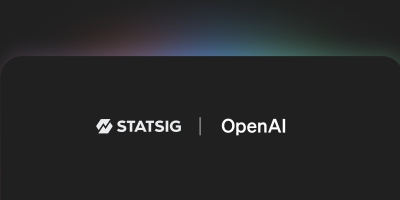Leo.AI
Turn ideas into products, in seconds.
Generative AI Product Design Engineering CAD Models Efficiency 3D DesignTool Information
| Primary Task | Product development |
|---|---|
| Category | business-and-finance |
| Sub Categories | 3d-design-and-modeling generative-art design-generators |
| Country | United States |
Leo is presented as the world's pioneering engineering design copilot, that leverages the power of generative AI to enable engineers to convert their ideas into tangible products in a streamlined manner. Leo's AI platform is capable of transforming multiple sources like text, sketches, specifications, and CAD constraints into DFMA-optimized, fully assembled 3D CAD models, thus facilitating a radical shift towards increased efficiency. Despite the sophisticated capabilities, Leo doesn't aim to replace engineers but to make them more productive. The tool enhances engineering creativity through its iterative transformation of diverse inputs into complete, optimized product assemblies. Leo simplifies the process of brainstorming, sketching, and designing intricate 3D mechanical products, alleviating the burden of tedious tasks. Companies can utilize Leo to potentially reduce project costs and timelines while enhancing productivity and revenue, leveraging the platform's ability to learn from specific design guidelines. The tool boasts two main features: Leo Ideation, designed to streamline design alternatives and technical documentation, and Leo CAD, developed to swiftly convert design concepts into optimized 3D CAD models, significantly reducing engineering time and costs.
Leo AI is a technology company based in Cambridge, Massachusetts, founded in 2023. It specializes in AI-driven engineering design solutions, focusing on transforming the mechanical engineering sector through generative AI. The team comprises experienced mechanical engineers and deep learning researchers dedicated to addressing engineering and design challenges.
The company offers a generative AI platform that converts text, sketches, specifications, and CAD constraints into optimized 3D CAD models. This platform aids engineers and designers in efficiently creating mechanical products. Key features include design transformation, technical support with access to extensive resources, and the Leo Ideation Module, which allows users to generate designs and technical specifications using various inputs.
Leo AI has garnered recognition from notable companies in the engineering and design sectors, including HP, Zutacore, Elbit Systems, and Tenova Advanced Technologies. It is positioned as a challenger in the generative AI market for product design and simulation, aiming to enhance traditional engineering design processes.
| Pros |
|---|
|
| Cons |
|---|
|
Frequently Asked Questions
1. What is Leo.AI?
Leo.AI is the world's pioneering engineering design copilot that utilizes generative AI to help engineers convert their concepts into tangible products with efficiency. It's capable of transforming several sources like sketches, specifications, and CAD constraints into DFMA-optimized, fully assembled 3D CAD models. The platform does not aim to replace engineers, but to enhance their productivity.
2. What is the primary function of Leo?
The primary function of Leo is to enable engineers to quickly and efficiently turn their ideas into products by transforming input data such as text, sketches, and specifications into DFMA-optimized, 3D CAD models. The system allows for rapid product development through generative artificial intelligence, facilitating brainstorming, design, and optimization in the product creation process.
3. How does Leo assist engineers in their design process?
Leo empowers engineers in their design process by swift transformation of various input types - from text to sketches, specifications, and CAD constraints into fully assembled, optimized 3D CAD models. It simplifies tedious tasks such as brainstorming, sketching, and designing intricate 3D mechanical products.
4. Does Leo.AI replace engineers or enhance their capabilities?
Leo does not aim to replace engineers. Its purpose is to enhance their productivity and creativity. The platform supports engineers by transforming their diverse inputs into complete, optimized product assemblies, effectively facilitating their innovative efforts.
5. Does Leo.AI solely create 3D CAD models?
No, Leo not only creates 3D CAD models but also leverages its AI capabilities for a range of additional features. These include transforming diverse inputs into fully assembled product assemblies, reducing project costs, and timelines, enhancing productivity and revenue, and learning from specific design guidelines.
6. How does Leo contribute to cost and time efficiency in project delivery?
Leo contributes to cost and time efficiency in project delivery by swiftly converting design concepts into optimized 3D CAD models. This rapid and efficient transformation process can cut down excessive engineering time and costs. Also, it enables companies to learn from specific design guidelines, which further aids the reduction in cost and time.
7. Can you explain the two main features of Leo, Leo Ideation and Leo CAD?
Leo's two main features are Leo Ideation and Leo CAD. Leo Ideation is designed to streamline the creation of design alternatives and technical documentation. Leo CAD on the hand, facilitates rapid conversion of design concepts into optimized 3D CAD models, leading to a significant reduction in engineering time and costs.
8. In what ways does Leo simplify the tasks of brainstorming, sketching, and designing?
Leo simplifies the tasks of brainstorming, sketching, and designing by transforming multiple sources of input into DFMA-optimized, full assembly 3D CAD models. Using the iterative transformation process, engineers can constantly refine their designs. It alleviates the burden of manual work by generating advanced designs from simple sketches or text.
9. Is Leo.AI capable of learning particular design guidelines?
Yes, Leo is capable of learning from specific design guidelines. This highlights its adaptability to provide solutions that are suited to the particular needs of a design or a company. The more the AI system is used with specific designs, the more it learns and the better it becomes at providing DFMA-optimized, 3D CAD models.
10. How does Leo use generative AI in product development?
Leo uses generative AI in product development to turn ideas into tangible products within seconds. It transforms words, sketches, and CAD constraints into complete, DFMA-optimized product assemblies. This enables a more streamlined process of brainstorming, designing, and finalizing detailed 3D mechanical products.
11. Is Leo.AI suitable for mechanical engineering processes?
Yes, Leo.AI is suitable for mechanical engineering processes. It is well suited to transform mechanical language into 3D mechanical models adhering to industry standards and best practices, making it a reliable tool for engineers focusing on 3D mechanical product design.
12. What kind of inputs does Leo.AI require or accept?
Leo.AI requires or accepts inputs in the form of text, sketches, specifications, and CAD constraints. These inputs are then processed and transformed into DFMA-optimized, fully assembled 3D CAD models.
13. Can Leo.AI be used for designing intricate 3D mechanical products?
Yes, Leo.AI can be used for designing intricate 3D mechanical products. The AI system is designed to alleviate the burden of tedious tasks associated with this process, by transforming diverse inputs into complete, optimized product assemblies.
14. In what way does using Leo lead to revenue escalation?
Using Leo can lead to an escalation in revenue by making the design process more efficient, thereby reducing project costs and timelines. This allows companies to complete projects swiftly and take on additional work, thus potentially increasing their revenue.
15. How does Leo.AI help in the documentation of design alternatives and technical information?
Leo.AI helps in the documentation of design alternatives and technical information through its feature Leo Ideation. Leo Ideation is designed to streamline the creation and documentation of design alternatives, providing swift access and clarity to engineers and designers during the product development and decision-making processes.
16. Is there a way to test early versions of Leo?
Yes. As per the information available on their website, Leo.AI is currently inviting engineers and designers to test early versions of Leo Ideation. This would entail providing them with early access to the software for practical application and feedback.
17. Can Leo.AI bring about a significant reduction in engineering time and cost?
Yes, Leo.AI can bring about a significant reduction in engineering time and cost. Its AI platform swiftly converts design concepts into optimized 3D CAD models, which significantly reduces the time and cost associated with the traditional design process.
18. How can companies get in touch for further information on Leo.AI?
Companies can contact Leo.AI through multiple channels. There is a designated 'Contact Us' page on their website. Apart from that, they can be reached via a provided email address [email protected], or by mail at their office located at 160 Alewife Brook Pkwy #1095, Cambridge, MA 02138, United States.
Comments
Similar Tools
Related News

Anthropic, a leading AI safety and research company renowned for its Claude large language models, has announced a significant ...
@devadigax | Oct 02, 2025

Sales tax compliance, a notoriously complex and time-consuming process for businesses, is getting a major technological upgrade...
@devadigax | Sep 18, 2025

Nothing, the innovative consumer technology startup founded by Carl Pei, has successfully closed a $200 million Series C fundi...
@devadigax | Sep 16, 2025

Atlassian, the leading provider of collaborative software development tools, has announced the acquisition of Cycle, a company ...
@devadigax | Sep 03, 2025

OpenAI, the leading artificial intelligence research company behind the groundbreaking ChatGPT, kicked off the week with a doub...
@devadigax | Sep 02, 2025

Framer, a popular no-code website builder, has officially entered the billion-dollar club. The company announced a $100 milli...
@devadigax | Aug 28, 2025
 AI Tool Buzz
AI Tool Buzz